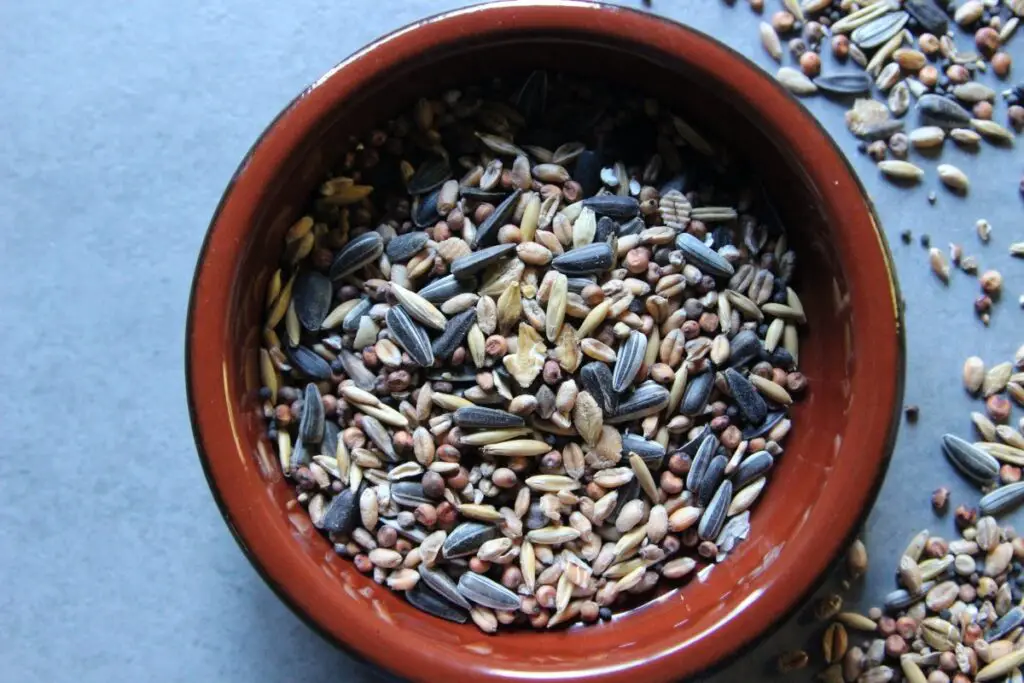Bird Seed Fillers to Avoid
Using bird seeds is one of the most common ways to fill bird feeders. However, we tend to our birds without knowing what bird seed fillers to avoid. Birds enjoy most seeds, but there are a few seed types that you should refrain. It’s important to note that not all manufacturers formulate bird seed mixes with birds in mind.
You can find some low-cost bird seed mixes manufactured only for profit. These mixes contain some seeds that most birds don’t like, and these seeds are often called “fillers.” Some commercial seeds even contain more than 60 percent filler seeds.
So, a cheap bag of birdseed mixes might be mostly filler seeds, and buying it won’t be a good value. Let’s discuss what bird seed filler you should avoid.
What are Some Common Filler Seeds?

Mostly, filler seeds are described as “grain products.” So, avoid buying bird seed mixes with such labels because they usually contain one or more filler seeds. Here’s a list of some common filler seeds that you should avoid.
- Milo or sorghum
- Wheat
- Rapeseed
- Canary seed
- Oats
- Rice
- Flax
- Red millet
- Golden millet
- Buckwheat
In many countries, manufacturers are bound by law to mention the name of all ingredients used in a package. Ideally, you should buy bird seed mixes that don’t contain filler seeds.
Birds usually drop filler seeds onto the ground. It leads to unwanted sprouting by uneaten seeds buildup because not even ground-feeding birds like to eat. The buildup of filler seeds on the ground can also contaminate mold.
Most filler seeds also have poor nutritional value that doesn’t give birds the energy and calories they need, especially during winter. Filler seeds can also contaminate other seeds with good nutritional value by becoming a breeding ground for fungus and bacteria.
Why Do Manufacturers Add Seed Fillers in Bird Seed Mixes?
It’s sad that some manufacturers add a huge amount of filler seeds in their bird seed mixes, and a lot of food is wasted. They do it to outsell their competitors because it allows them to sell their products at low prices.
Not only does it lead to food wastage, but it can also reduce the number of birds your bird feeder attracts. Most importantly, filler seeds can also be harmful to birds if they start contaminating other high nutritional value seeds.
Do Filler Seeds Attract Any Bird Species?
Yes, some types of filler seeds attract some species of birds.
High-value seeds are good for most bird species, and most birds usually avoid filler seeds. But species such as Steller’s jays, Gambel’s quail, curve billed thrashers, and cowbirds are attracted towards some filler seeds, including milo seeds.
Flaxseed is another low-value filler that attracts some parrot species.
Choosing the right birdseed type to add to your bird feeder is important to decrease the amount of wasted food. You need to decide how much money you want to spend and what bird species you want to attract.
Although there are no perfect combinations of birdseed mixes, you should always choose seeds with a high nutritional value for your bird feeding station.
Bird seeds can be colorful and birds are so much fun to watch feasting on them. But have you ever wondered if bird seeds can be shared with your other house pets? Dogs can really be mischievous to actively play and romp around your backyard, and stumble to the bird seeds you prepped for your feathered friends. What can bird seed consumption do to dogs? Here are some must know facts on whether bird seed is safe for your dogs or not.